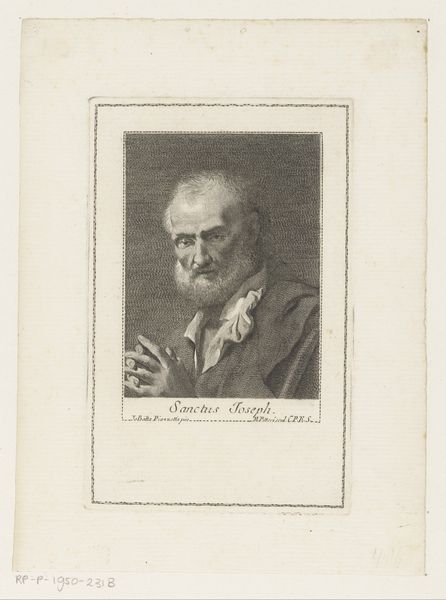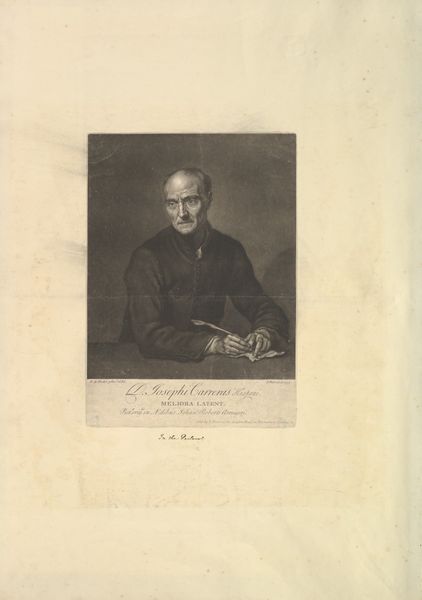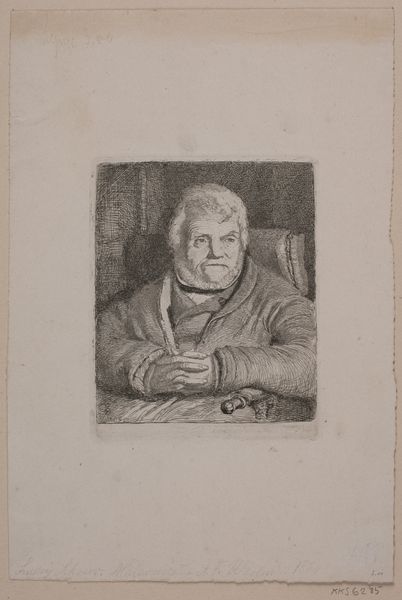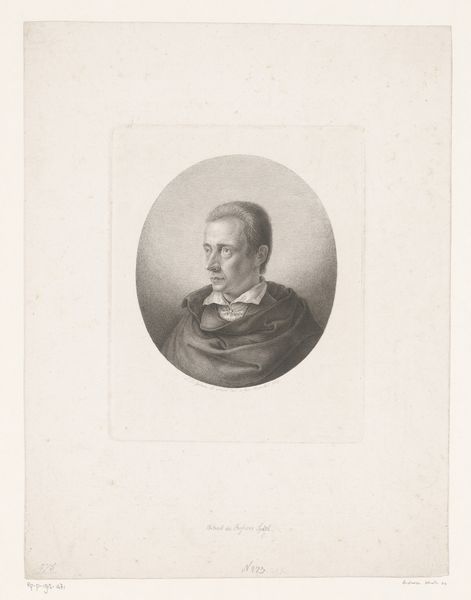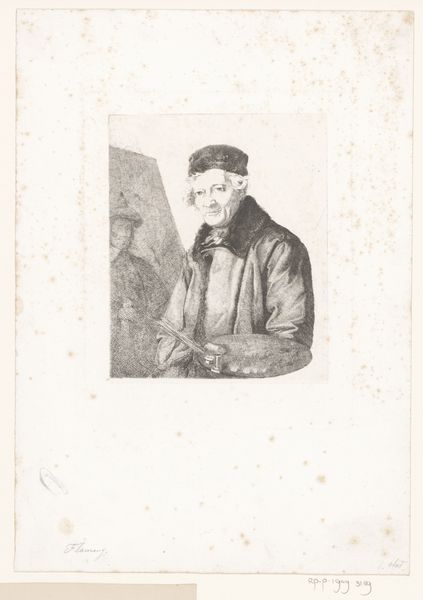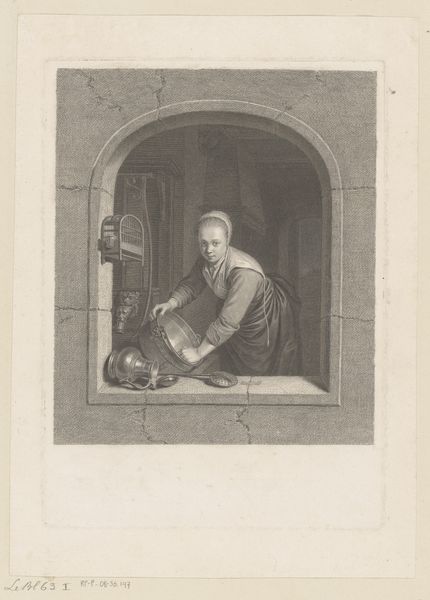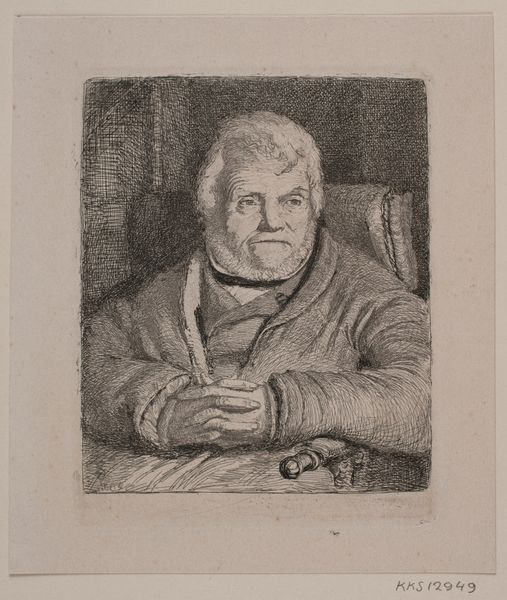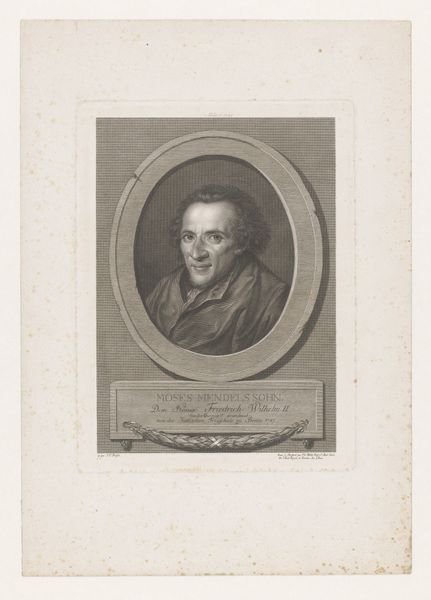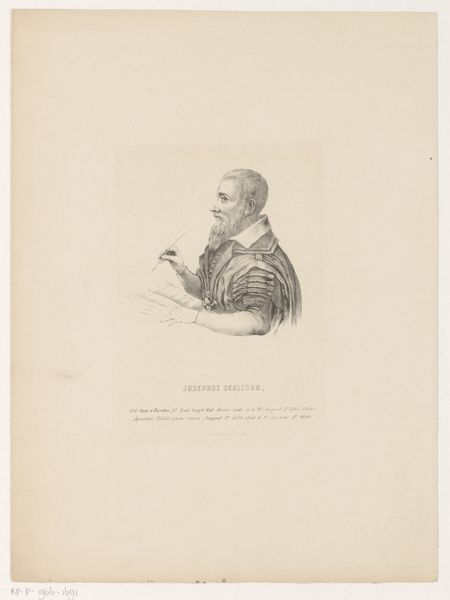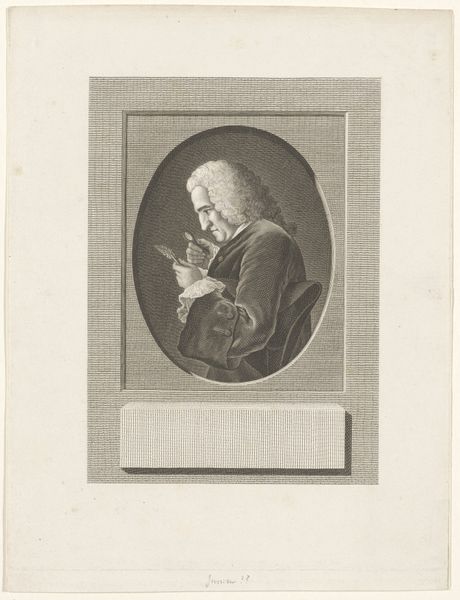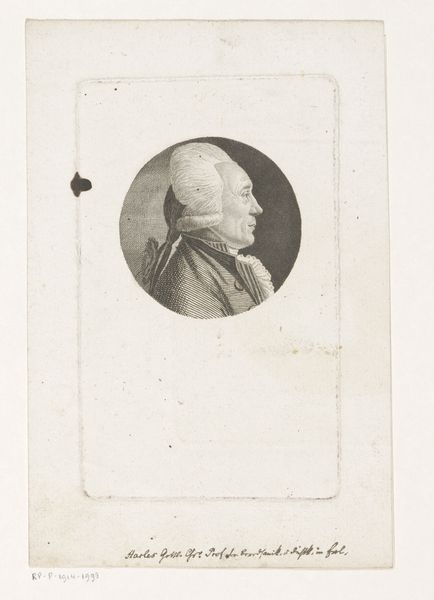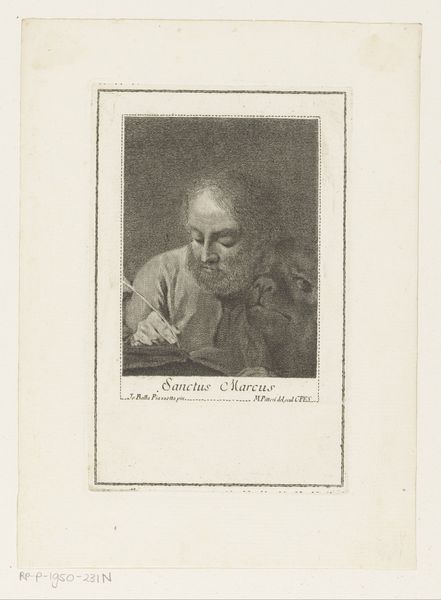
print, etching, engraving
#
portrait
#
pencil drawn
#
light pencil work
#
baroque
#
yellowing background
# print
#
etching
#
pencil sketch
#
chiaroscuro
#
pencil work
#
engraving
Dimensions: height 235 mm, width 171 mm
Copyright: Rijks Museum: Open Domain
Curator: Look at this piece! It's an engraving titled "Portret van geestelijke Giovanni Marinoni"–or, "Portrait of clergyman Giovanni Marinoni"—created by Giovanni Marco Pitteri, sometime between 1712 and 1786. What grabs you first? Editor: Melancholy. Undeniably, this image breathes sorrow. He's clasping that crucifix so tightly…and the overall monochrome, aged look intensifies it. What’s more telling is the method, the clear print and cross hatching must have taken hours of dedication from the printmaker. Curator: The chiaroscuro here is beautiful; there’s such a subtle gradience in tones which is remarkable, particularly when it's etching. Look at how the light gently grazes Marinoni's face, while everything else melts softly into the shadows, emphasizing his introspective gaze. Editor: Absolutely, and thinking about the tools used–the metal plates, the acid for etching, the press to create these prints. It reminds us how deeply labor is ingrained into even these devotional images. Consider this was not fine art per se, it's not oil on canvas but one image in many that would be made from these etched metal printing plates, produced through repetitive labor and sold affordably. Curator: Indeed. It captures a complex figure in a moment of vulnerability, bridging that space between the material world and something beyond. We often reduce Baroque art to grandiosity, forgetting how much personal piety it held, that I think speaks to our material engagement too–I imagine families with modest means commissioning and treasuring these types of mass produced spiritual engravings for decades or generations as this has been treasured for. Editor: Seeing it this way – acknowledging both the delicate handiwork and the process that replicated it for wider accessibility – reshapes our understanding. Not simply as a sacred emblem, but as an outcome of industry, skill, faith, and economic dynamics merging together. Curator: Yes, in revisiting this piece I find I feel like I am left appreciating this tender glimpse into both a man and a time when making sacred was more available and in demand by everyone, everywhere. Editor: It also prompts further inquiry, like who was involved? And where and how was each element of the artistic production actually accomplished? Each line etched tells more than a story if one knows where to start.
Comments
No comments
Be the first to comment and join the conversation on the ultimate creative platform.
